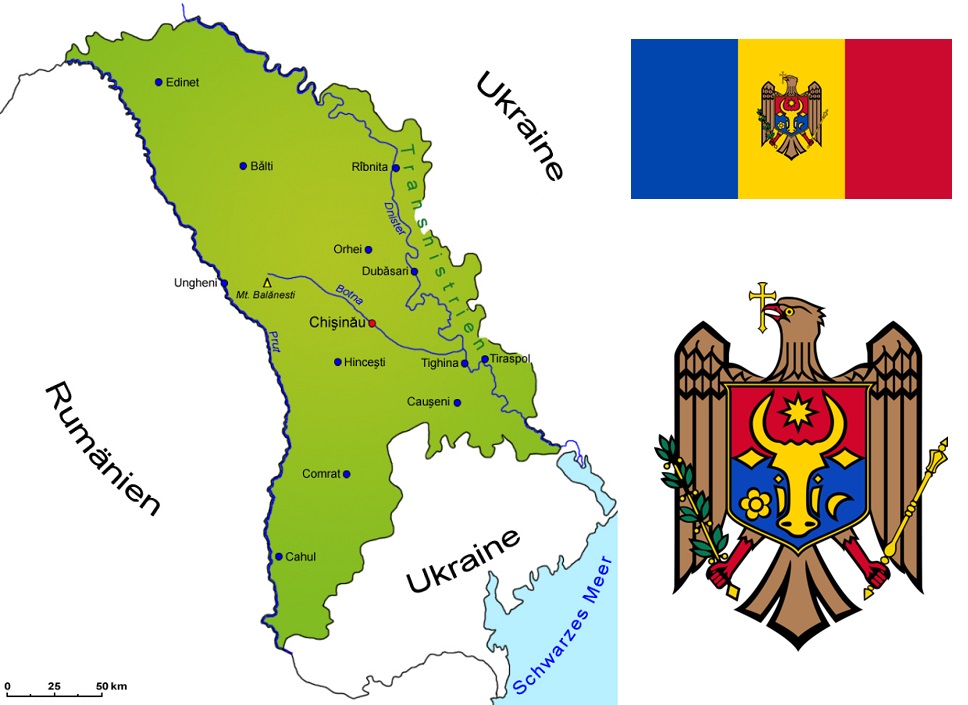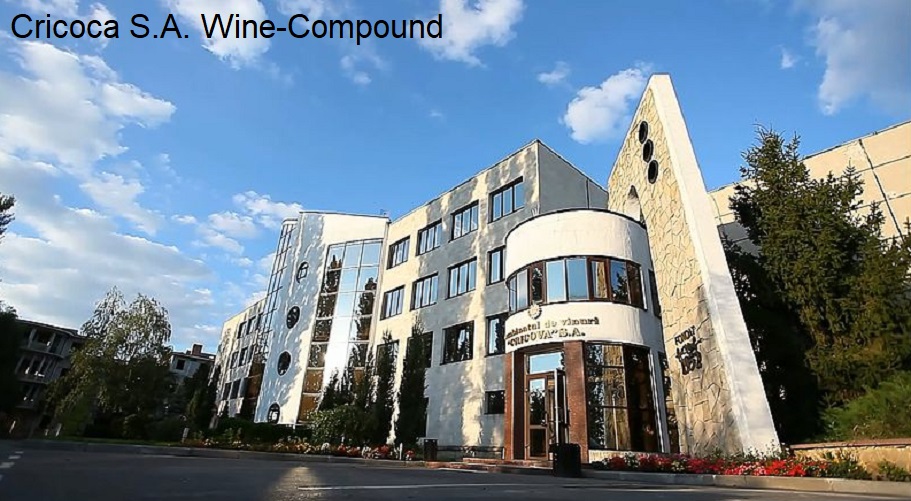Results
2,284 Results
Loading more Results ...
Loading more Results ...
Description to Moldova, republic of
The Republic of Moldova (Romanian: Republica Moldova; Moldova for short) in south-east Europe with the capital Chișinău covers 33,8431 km². It borders Romania to the west and is surrounded by Ukraine to the north, east and south. The current state was created in 1991 following the collapse of the USSR. The eastern part of the state, Transnistria, is not under the control of the Moldovan government. It declared itself independent after a military conflict in 1992 and is an area supported exclusively by Russia with a de facto regime and is not recognised internationally.

History
The geographical roots lie in the historical landscape of Bessarabia. Many archaeological finds, such as amphorae and grape seeds, prove that viticulture has been practised here for over 5,000 years in ancient times. The influence of Romania can be felt through the long shared history of viticulture. Numerous legends and anecdotes bear witness to the ancient winegrowing tradition. The most famous story is that of the storks:
Once again there was a Turkish invasion; the enemy besieged a fortress near Grodieshti. The brave defenders were running out of water and food, and the strength of the fighters was also running low. Suddenly, hundreds of storks appeared in the sky, using the wind and their powerful wing beats to drive the enemy to the ground. The storks threw bundles of vines from their beaks down to the defenders. The warriors were thus saved from thirst and hunger. With renewed vigour, they successfully defended their home fortress and the Turkish enemy was forced to retreat.
Since that time, the stork has been a symbol of happiness and contentment. The stork with grapes symbolises Moldovan viticulture and is included in the logo of the winegrowers' association. An independent wine culture was established by the princes of Moldavia in the Middle Ages. However, this collapsed again at the beginning of the 16th century under 300 years of Ottoman rule and the associated ban on alcohol.

Viticulture in modern times
After the Russo-Turkish War, viticulture was reactivated from 1812. In the second half of the 19th century, many French grape varieties were introduced. Towards the end of the 20th century, however, viticulture again suffered severe setbacks and losses due to the phylloxera catastrophe. After a brief recovery, most of the vineyards and wineries were destroyed during the two world wars. Reconstruction began in the 1950s. Within ten years, 150,000 hectares were planted and the vine population grew to well over 200,000 hectares. Moldova became the largest wine producer in the USSR, accounting for around a quarter of production. In the 1980s, however, under Mikhail Gorbachev, many vineyards were cleared again, especially in the north. Viticulture is of eminent economic importance. Wine products, fruit and vegetables are the main exports.
In contrast to the other former USSR states, the proportion of dry wines is relatively high, but there are also traditional sweet dessert wines. The port-like Kagor has a two-hundred-year-old tradition. Almost two thirds of production comes from co-operative wineries. Well-known producers include Acorex, Aroma, Branesti, Château Vartel, Ciumai, Comrat, Cricova, Dionysos Mereni, Milestii Mici, Purcari, Romanesti, Taraclia and Trifesti. Around 90% is exported, with the vast majority (over 80%) going to Russia. In March 2006, the Russian government introduced a ban on the import of Moldovan and Georgian wine products. According to the official interpretation, the ban was imposed due to alleged violations of health regulations (excessive levels of harmful substances). The embargo was lifted in November 2007. However, the high proportion of exports was significantly reduced in the long term.
Wine-growing regions
The geographical and climatic conditions are very favourable for viticulture. Moldova lies on the same latitude as Burgundy. It has a continental climate with high levels of sunshine. In 1954, Professor P. I. Ivanov divided Moldova into four agricultural zones with different climates. In the northern region of Balti, mainly white grapes are produced for the production of brandy, fortified wines and simple wines. The Codru region in the centre, with the capital Chisinau, is surrounded by forested mountains. More than half of the vineyards and the most famous wineries, such as the former Tsar's estate Romanesti, are located here.
The 65 kilometres of underground cellars in the town of Cricova store the sparkling wines produced in the winery as well as an extensive historical wine collection. Among other things, excellent red wines are produced in this region. The Cahul region in the south has a particularly favourable climate for red and sweet wines. The fourth region, Purcari (also known as Nistreana), is located in the south-east of the country along the western bank of the Nister. It is known for its age-worthy Bordeaux-style red wines, such as the "Negru de Purcari" produced by the winery of the same name. Towards the end of the 19th century, Purcari wines were supplied to the English royal court, among others.
Grape varieties
In 2022, the vineyards covered 122,000 hectares of vines and the wine production volume was 1.4 million hectolitres. Around 40% of the area is used for the cultivation of table grapes. White wine varieties account for two thirds and red wine varieties for one third. The grape variety index with the top 50 (Kym Anderson statistics):
Grape variety |
Colour |
Synonyms or Moldavian name |
Hectare |
| Moldova | red | Moldova, Reka | 12.375 |
| Cabernet Sauvignon | red | - | 8.169 |
| Aligoté | white | Mahranauli | 7.765 |
| Merlot | red | - | 7.689 |
| Sauvignon Blanc | white | Sotern Marunt, Verdo Belîi | 6.909 |
| Chardonnay | white | Wais Edler, Waiser Clevner | 4.133 |
| Rkatsiteli | white | - | 3.898 |
| Isabella | red | - | 3.468 |
| Pinot Noir | red | Cerna, Pino Fran, Pino Ceren | 2.366 |
| Muscat Ottonel | white | - | 1.859 |
| Riesling | white | Rislinoc | 1.701 |
| Bianca | white | - | 1.340 |
| Pinot Gris | white | Râjik | 1.208 |
| Kodryanka | red | Codreanca, Kodrianka | 1.143 |
| Gewürztraminer / Traminer | white | Traminer Musqué, Traminer Rose | 1.099 |
| Fetească Albă | white | Fetișoară, Păsărească Albă, Poamă Fetei Albă | 954 |
| Magaracha Rannii | red | Korai Magaracs | 884 |
| Alb de Suruceni | white | - | 780 |
| Cabernet Franc | red | - | 756 |
| Muscat Yantarnyi | white | - | 683 |
| Saperavi | red | - | 573 |
| Victoria | white | - | 565 |
| Pervenets Magaracha | white | - | 517 |
| Cardinal | red | - | 473 |
| Alb de Onițcani | white | - | 424 |
| Fetească Neagră | red | Coada Răndunicii, Păsărească Neagră | 402 |
| Fetească shelf | white | - | 372 |
| Chasselas | white | - | 329 |
| Sukholimansky Bely | white | - | 325 |
| Riton | white | - | 313 |
| Arcadia | white | Nastea, Nastya | 303 |
| Trebbiano Toscano | white | - | 277 |
| Muscat d'Hamburg | red | - | 254 |
| Viorika | white | Viorica | 251 |
| Kodrinskii | red | Codrinski | 229 |
| Precentile | white | - | 215 |
| Pinot Blanc | white | Burgundy Veisser, Pino Belîi | 210 |
| Noah | white | - | 200 |
| Irsai Olivér | white | - | 180 |
| Bastardo Magarachsky | red | - | 180 |
| Cot | red | Cagors, Nuar de Presac | 162 |
| Negru de Yaloven | red | Negru de Ialoveni | 141 |
| Pinot Meunier | red | - | 138 |
| Yalovenskii Ustoichivyi | white | - | 129 |
| Pamyati Negrulya | red | - | 123 |
| Italia | white | - | 118 |
| Csaba Gyöngye | white | - | 110 |
| Syrah | red | - | 87 |
| Pölöskei Muskotály | white | - | 83 |
| Queen of the vineyards | white | Queen of the Vineyard, Rasaki Oungarias | 61 |
Flag: from Nameneko, public domain, link
Coat of arms: Public domain, Link
Map: By Perconte - transferred to Commons by Ireas using CommonsHelper, CC BY-SA 2.5, Link
Cricova: by Cepaev - Own work, CC BY-SA 3.0, Link

